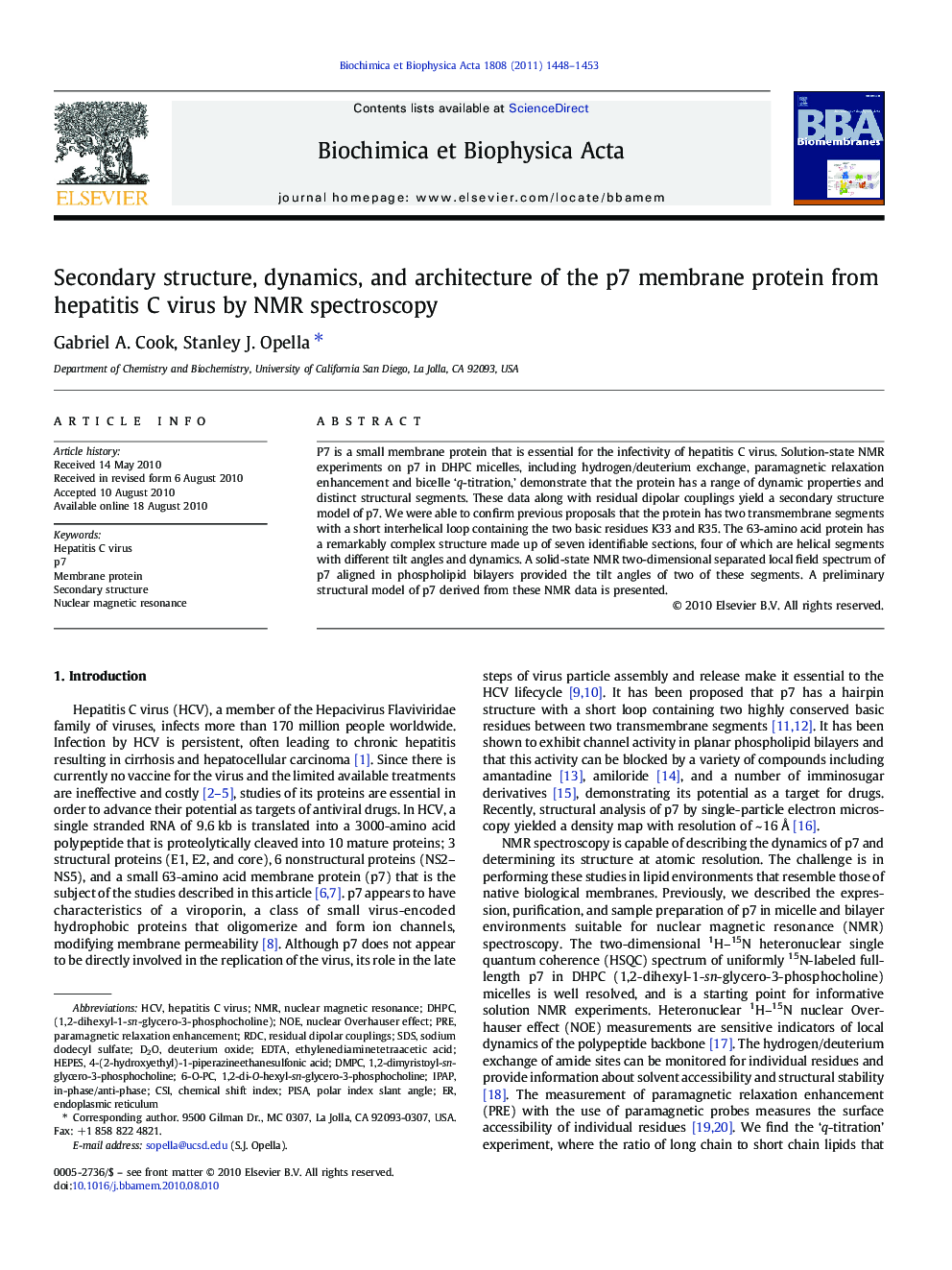| Article ID | Journal | Published Year | Pages | File Type |
|---|---|---|---|---|
| 10797888 | Biochimica et Biophysica Acta (BBA) - Biomembranes | 2011 | 6 Pages |
Abstract
P7 is a small membrane protein that is essential for the infectivity of hepatitis C virus. Solution-state NMR experiments on p7 in DHPC micelles, including hydrogen/deuterium exchange, paramagnetic relaxation enhancement and bicelle 'q-titration,' demonstrate that the protein has a range of dynamic properties and distinct structural segments. These data along with residual dipolar couplings yield a secondary structure model of p7. We were able to confirm previous proposals that the protein has two transmembrane segments with a short interhelical loop containing the two basic residues K33 and R35. The 63-amino acid protein has a remarkably complex structure made up of seven identifiable sections, four of which are helical segments with different tilt angles and dynamics. A solid-state NMR two-dimensional separated local field spectrum of p7 aligned in phospholipid bilayers provided the tilt angles of two of these segments. A preliminary structural model of p7 derived from these NMR data is presented.
Keywords
SDSHEPESD2ONOEIPAPPISACSIdHPCdMPCnuclear magnetic resonance1,2-dimyristoyl-sn-glycero-3-phosphocholine4-(2-hydroxyethyl)-1-piperazineethanesulfonic acidEDTAEthylenediaminetetraacetic acidnuclear overhauser effectparamagnetic relaxation enhancementDeuterium OxideNMRsodium dodecyl sulfatechemical shift indexendoplasmic reticulumRdcpreSecondary structureHepatitis C virusHCVMembrane proteinResidual dipolar couplings
Related Topics
Life Sciences
Biochemistry, Genetics and Molecular Biology
Biochemistry
Authors
Gabriel A. Cook, Stanley J. Opella,
